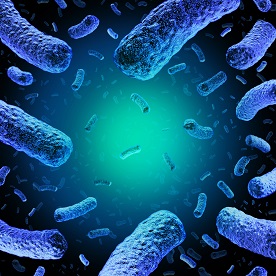The Return of Listeria: Difference between revisions
No edit summary |
(→Intro) |
||
| Line 1: | Line 1: | ||
== | ==Introduction== | ||
Listeria monocytogenes, | Picture this: It's a scorching summer day, and you're standing in line at your favorite ice cream shop, torn between flavors and toppings. However, what if the seemingly innocent act of choosing your treat was overshadowed by a silent threat? Enter Listeria monocytogenes, a bacterium lurking in that beloved cold dessert.Listeria monocytogenes, infamous for causing listeriosis, is not limited to ice cream—it can be found in an array of foods, including raw vegetables, meat, and dairy products. While most healthy individuals may experience only mild flu-like symptoms from consuming contaminated food, certain demographics face grave risks.Groups such as the elderly, pregnant women, newborns, and individuals with compromised immune systems are particularly susceptible to severe illness from Listeria monocytogenes. For them, listeriosis can escalate into dangerous conditions like meningitis, posing significant health threats. Symptoms of listeriosis vary but can include fever, muscle aches, nausea, and diarrhea. In severe cases, the infection can progress to affect the nervous system, leading to symptoms such as headache, stiff neck, confusion, and convulsions. Swift diagnosis and treatment, often involving antibiotics, are crucial, especially for high-risk individuals.To combat Listeria monocytogenes contamination, stringent food handling and hygiene practices are imperative. From thorough cooking of raw foods to meticulous washing of produce, proper precautions can significantly reduce the risk of infection.The prevalence of Listeria monocytogenes in the food supply chain can be influenced by environmental conditions and human activities. Understanding these factors is essential for implementing effective prevention strategies and mitigating risks to public health.Delving into the gene expression of Listeria monocytogenes provides valuable insights into its virulence and antibiotic resistance mechanisms. By deciphering its genetic makeup, researchers can better understand how this pathogen interacts with the human body and the environment, aiding in the development of targeted interventions. | ||
==New Section== | ==New Section== | ||
Revision as of 00:08, 15 April 2024
Introduction
Picture this: It's a scorching summer day, and you're standing in line at your favorite ice cream shop, torn between flavors and toppings. However, what if the seemingly innocent act of choosing your treat was overshadowed by a silent threat? Enter Listeria monocytogenes, a bacterium lurking in that beloved cold dessert.Listeria monocytogenes, infamous for causing listeriosis, is not limited to ice cream—it can be found in an array of foods, including raw vegetables, meat, and dairy products. While most healthy individuals may experience only mild flu-like symptoms from consuming contaminated food, certain demographics face grave risks.Groups such as the elderly, pregnant women, newborns, and individuals with compromised immune systems are particularly susceptible to severe illness from Listeria monocytogenes. For them, listeriosis can escalate into dangerous conditions like meningitis, posing significant health threats. Symptoms of listeriosis vary but can include fever, muscle aches, nausea, and diarrhea. In severe cases, the infection can progress to affect the nervous system, leading to symptoms such as headache, stiff neck, confusion, and convulsions. Swift diagnosis and treatment, often involving antibiotics, are crucial, especially for high-risk individuals.To combat Listeria monocytogenes contamination, stringent food handling and hygiene practices are imperative. From thorough cooking of raw foods to meticulous washing of produce, proper precautions can significantly reduce the risk of infection.The prevalence of Listeria monocytogenes in the food supply chain can be influenced by environmental conditions and human activities. Understanding these factors is essential for implementing effective prevention strategies and mitigating risks to public health.Delving into the gene expression of Listeria monocytogenes provides valuable insights into its virulence and antibiotic resistance mechanisms. By deciphering its genetic makeup, researchers can better understand how this pathogen interacts with the human body and the environment, aiding in the development of targeted interventions.
New Section

By [Author Name]
At right is a sample image insertion. It works for any image uploaded anywhere to MicrobeWiki.
The insertion code consists of:
Double brackets: [[
Filename: PHIL_1181_lores.jpg
Thumbnail status: |thumb|
Pixel size: |300px|
Placement on page: |right|
Legend/credit: Magnified 20,000X, this colorized scanning electron micrograph (SEM) depicts a grouping of methicillin resistant Staphylococcus aureus (MRSA) bacteria. Photo credit: CDC. Every image requires a link to the source.
Closed double brackets: ]]
Other examples:
Bold
Italic
Subscript: H2O
Superscript: Fe3+
Sample citations: [1]
[2]
A citation code consists of a hyperlinked reference within "ref" begin and end codes.
To repeat the citation for other statements, the reference needs to have a names: "<ref name=aa>"
The repeated citation works like this, with a forward slash.[1]
